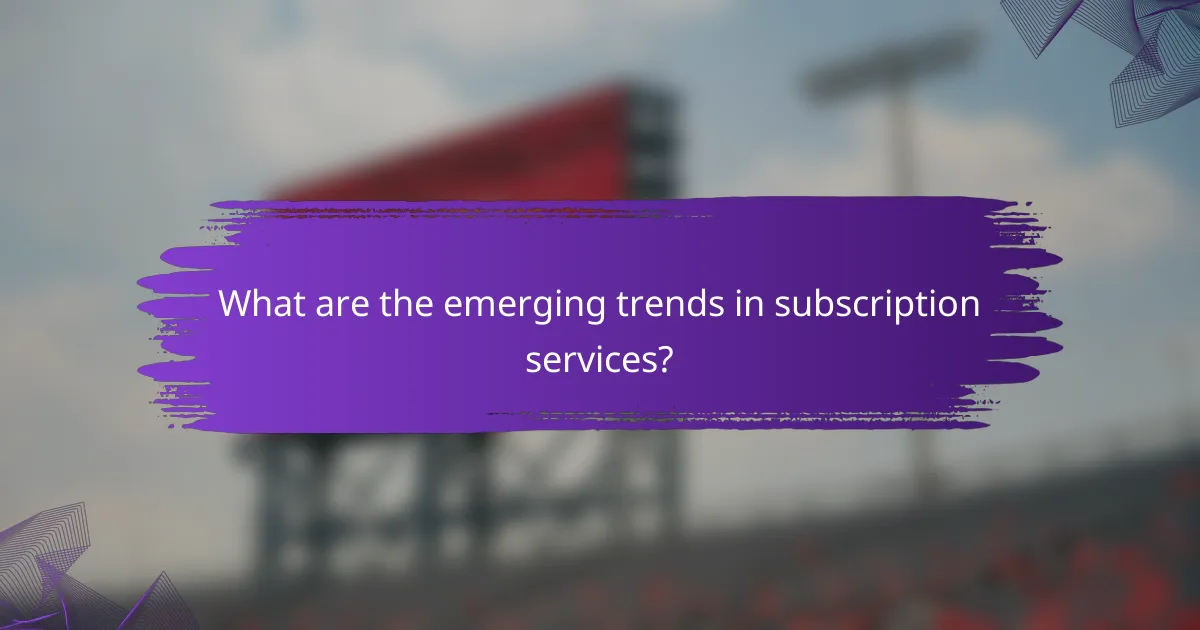Month-to-month plans provide consumers with the flexibility to adjust their services without the burden of long-term commitments. This option is particularly appealing for those who prefer lower initial costs and the ability to adapt to changing needs. However, it’s important to weigh these benefits against the stability and pricing guarantees often found in long-term contracts.

What are the benefits of month-to-month plans in the UK?
Month-to-month plans in the UK offer consumers significant advantages, including flexibility and the absence of long-term commitments. These plans allow users to adjust their services based on current needs without being locked into lengthy contracts.
Flexibility for consumers
Month-to-month plans provide consumers with the freedom to change their services as needed. This flexibility is particularly beneficial for those who may have fluctuating requirements, such as students or temporary workers. For example, a user can easily upgrade or downgrade their plan based on their usage without incurring hefty fees.
Additionally, consumers can switch providers more readily if they find a better deal, enhancing their ability to manage costs effectively. This adaptability is a key reason many prefer month-to-month arrangements over fixed contracts.
No long-term commitment
One of the primary benefits of month-to-month plans is the lack of long-term commitment. Consumers are not tied to a contract that lasts for several months or years, which can lead to financial strain if circumstances change. This feature is particularly appealing in the UK, where economic conditions can fluctuate.
Without a long-term commitment, users can cancel their service with minimal notice, typically just a month. This allows for greater financial control and peace of mind, especially for those uncertain about their future needs.
Ability to adapt to changing needs
Month-to-month plans enable consumers to adapt their services quickly in response to changing needs. For instance, if a user starts a new job that requires more data or a different type of service, they can adjust their plan without waiting for a contract to expire. This responsiveness is crucial in today’s fast-paced environment.
Moreover, these plans often come with the option to add or remove features easily, allowing consumers to tailor their services to their current lifestyle. This adaptability ensures that users only pay for what they need, making it a cost-effective choice.

How do month-to-month plans compare to long-term contracts?
Month-to-month plans offer flexibility and lower initial costs compared to long-term contracts, which typically require a commitment for a specified duration. While month-to-month options allow users to adjust their services as needed, long-term contracts often provide stability in pricing and service guarantees.
Lower upfront costs
Month-to-month plans generally have lower upfront costs since they do not require large initial payments or deposits. This makes them attractive for individuals or businesses looking to manage cash flow effectively. For example, a month-to-month internet plan might start at around $30 per month, while a long-term contract could involve a setup fee or equipment purchase that raises initial expenses.
Additionally, many providers waive installation fees for month-to-month plans, further reducing the financial barrier to entry. This flexibility can be particularly beneficial for those who may need to change providers or services frequently.
Risk of price increases
One significant drawback of month-to-month plans is the potential for price increases. Service providers may adjust their rates more frequently for these plans, leading to unpredictable monthly expenses. For instance, a provider might raise the monthly fee after a promotional period ends, which could lead to higher costs than initially anticipated.
In contrast, long-term contracts often lock in a price for the duration of the agreement, providing more predictable budgeting. However, if the market rate decreases, customers on long-term contracts may miss out on lower prices available to new customers.
Commitment duration differences
Month-to-month plans require no long-term commitment, allowing users to cancel or change services with minimal notice, often just 30 days. This is ideal for those who may relocate or have uncertain needs. For example, a freelancer may prefer a month-to-month plan for internet service while working on short-term projects.
Long-term contracts, on the other hand, usually span one to two years or more, which can provide benefits like lower monthly rates or bundled services. However, the commitment can be a disadvantage if circumstances change, as early termination fees may apply. Customers should weigh their current needs against potential future changes when deciding between these options.

What factors should you consider when choosing between plans?
When choosing between month-to-month plans and long-term contracts, consider your budget, usage needs, and the reputation of the service provider. Each factor plays a crucial role in determining which option best suits your lifestyle and financial situation.
Budget and financial stability
Your budget is a primary consideration when selecting between plans. Month-to-month options typically have higher monthly rates but offer flexibility, while long-term contracts often provide lower rates but require a commitment. Assess your financial stability to determine if you can afford a long-term contract without risking your budget.
Consider potential penalties for early termination of long-term contracts, which can add unexpected costs. If your financial situation is uncertain, a month-to-month plan may be a safer choice, allowing you to adjust as needed.
Usage patterns and needs
Evaluate your usage patterns to decide which plan aligns with your needs. If your usage fluctuates significantly, a month-to-month plan allows you to adapt without being locked into a long-term commitment. For consistent usage, a long-term contract may provide better value.
Think about any upcoming changes in your life that might affect your usage, such as moving or changes in employment. If you anticipate significant changes, a flexible plan may be more suitable.
Service provider reputation
The reputation of the service provider is critical when choosing a plan. Research customer reviews and ratings to gauge reliability and customer service quality. A provider with a strong reputation may justify a long-term contract, while a lesser-known provider might be better suited for a month-to-month arrangement.
Look for any complaints regarding service interruptions or hidden fees, as these can impact your overall satisfaction. Prioritize providers that offer transparent pricing and responsive customer support to ensure a positive experience regardless of the plan you choose.

What are the potential drawbacks of month-to-month plans?
Month-to-month plans offer flexibility but come with several potential drawbacks that can affect overall costs and service reliability. Users should weigh these disadvantages against their need for short-term commitments.
Higher monthly rates
Month-to-month plans typically have higher monthly rates compared to long-term contracts. This is because providers often offer discounts for customers who commit to longer terms, which can lead to significant savings over time.
For instance, while a long-term contract might cost around $50 per month, a month-to-month plan could range from $60 to $80. This difference can add up, especially over the course of a year.
Limited promotional offers
Many service providers reserve their best promotional offers for long-term contracts, meaning those on month-to-month plans may miss out. These promotions can include reduced rates, bundled services, or even free trials of premium features.
As a result, customers on flexible plans might find themselves paying full price for services that others receive at a discount, impacting their overall value.
Potential service interruptions
Month-to-month plans may also be more susceptible to service interruptions, especially if a provider decides to prioritize long-term customers during peak times or network upgrades. This can lead to inconsistent service quality.
For example, if a provider needs to perform maintenance, they might notify long-term customers first, leaving month-to-month users with less reliable service during critical times.

How can you evaluate subscription services in the UK?
Evaluating subscription services in the UK involves comparing features, pricing, and customer feedback to find the best fit for your needs. Consider the specific benefits and limitations of month-to-month plans versus long-term contracts to make an informed decision.
Compare features and pricing
Start by listing the key features of each subscription service you are considering. Look for aspects such as content availability, user limits, and additional perks like free trials or discounts for longer commitments.
Pricing is crucial; month-to-month plans often have higher monthly rates compared to long-term contracts. For instance, a service may charge £10 per month for a rolling contract, while a yearly plan could be priced at £100, effectively reducing the monthly cost to around £8.33.
Read customer reviews
Customer reviews provide insight into the actual user experience with a subscription service. Look for feedback on reliability, content quality, and ease of use. Websites like Trustpilot or Google Reviews can be helpful in gathering diverse opinions.
Pay attention to recurring themes in reviews, such as issues with billing or customer service responsiveness. A service with consistently positive feedback is likely to be more reliable than one with mixed reviews.
Assess customer support options
Evaluate the customer support options available for each subscription service. Look for services that offer multiple channels of support, such as live chat, email, and phone assistance. This can be crucial if you encounter issues or have questions.
Check the availability of support hours as well. Some services may only provide assistance during business hours, while others offer 24/7 support. Quick response times can significantly enhance your overall experience with the service.

What are the emerging trends in subscription services?
Emerging trends in subscription services reflect a shift towards more tailored experiences, advanced technology, and a commitment to ethical practices. These trends are reshaping how consumers engage with products and services, making subscriptions more appealing and relevant.
Increased personalization
Personalization in subscription services allows companies to tailor offerings based on individual preferences and behaviors. This can include customized product selections, personalized communication, and targeted promotions that resonate with specific customer segments.
For instance, streaming services often recommend shows based on viewing history, while meal kit subscriptions may suggest recipes based on dietary preferences. This level of customization enhances user satisfaction and loyalty.
Integration of AI for recommendations
Artificial intelligence (AI) is increasingly being used to enhance subscription services through smarter recommendations. AI algorithms analyze user data to predict preferences and suggest products or content that users are likely to enjoy.
For example, e-commerce platforms utilize AI to recommend items based on previous purchases, while fitness apps may suggest workouts tailored to individual fitness levels. This technology not only improves user experience but also drives higher engagement and retention rates.
Focus on sustainability and ethical practices
Subscription services are increasingly prioritizing sustainability and ethical practices in response to consumer demand for responsible consumption. This includes sourcing materials responsibly, reducing waste, and ensuring fair labor practices throughout the supply chain.
Many companies now highlight their eco-friendly initiatives, such as using recyclable packaging or offering carbon-neutral shipping options. By aligning with these values, subscription services can attract environmentally conscious consumers and differentiate themselves in a competitive market.
